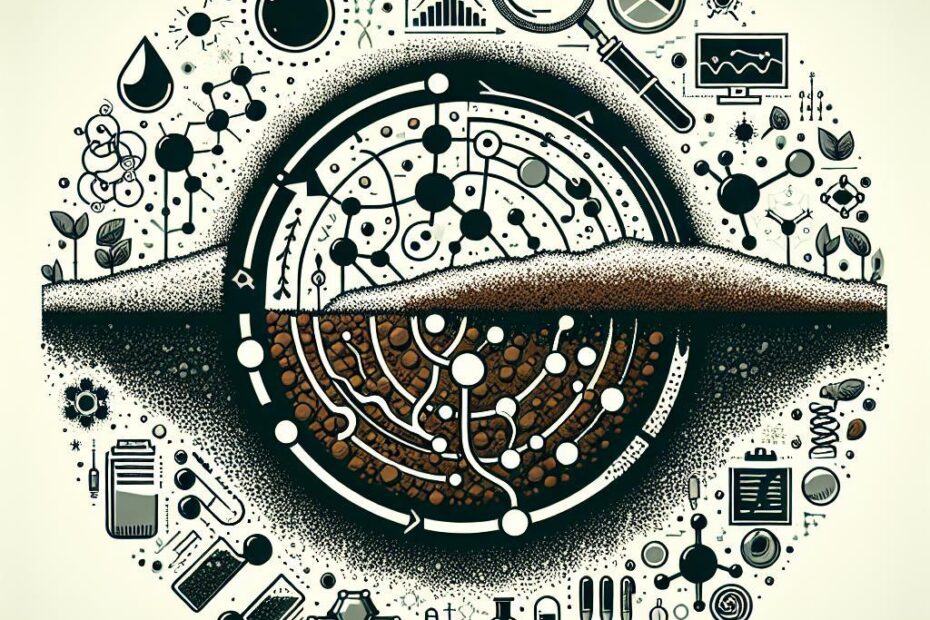Title: Is Soil a Homogeneous Mixture? Exploring the Composition of Earth’s Foundation
Introduction:
When we look at soil, we may think it is just a simple mixture of dirt and rocks. However, soil is a complex and dynamic system made up of various components that interact with each other in unique ways. One common question that arises is whether soil is a homogeneous mixture. In this article, we will explore the composition of soil and determine if it can be classified as a homogeneous mixture.
What is a Homogeneous Mixture?
Before we delve into the characteristics of soil, let’s first understand what a homogeneous mixture is. A homogeneous mixture is a substance that has uniform composition and properties throughout. In other words, all the components of a homogeneous mixture are evenly distributed and cannot be easily distinguished from one another.
Composition of Soil:
Soil is made up of a combination of minerals, organic matter, water, air, and living organisms. These components interact with each other to create a vibrant ecosystem that supports plant growth and sustains life on Earth. Let’s take a closer look at each component:
-
Minerals: Soil minerals are derived from the weathering and breakdown of rocks. These minerals provide essential nutrients for plant growth, such as nitrogen, phosphorus, and potassium.
-
Organic Matter: Organic matter in soil comes from decaying plants and animals. It helps improve soil structure, retain moisture, and promote the growth of beneficial microorganisms.
-
Water: Water is crucial for plant growth and nutrient uptake. It helps transport nutrients throughout the soil and provides a habitat for soil organisms.
-
Air: Soil air is essential for the respiration of plant roots and soil organisms. It also helps maintain soil structure and prevent compaction.
-
Living Organisms: Soil is teeming with life, from earthworms and insects to bacteria and fungi. These organisms play a vital role in nutrient cycling, decomposition, and soil health.
Is Soil a Homogeneous Mixture?
Based on the composition of soil, we can conclude that it is not a homogeneous mixture. Soil is a heterogeneous mixture, meaning it consists of different components that are not uniformly distributed throughout. Each soil sample can vary in mineral content, organic matter levels, moisture content, and biological activity. Additionally, soil properties can vary based on location, climate, and land use practices.
While soil is not a homogeneous mixture, it does exhibit some level of uniformity within a specific soil horizon or layer. This uniformity is influenced by factors such as soil texture, structure, and composition. However, variations in soil properties are inevitable due to the complex interactions of different components within the soil.
Benefits of Soil Heterogeneity:
Although soil is not a homogeneous mixture, its heterogeneity is actually beneficial for plant growth and ecosystem resilience. Some advantages of soil heterogeneity include:
-
Nutrient availability: Variations in soil composition can provide a diverse range of nutrients for plant uptake.
-
Microbial diversity: Heterogeneous soil supports a variety of soil organisms that contribute to nutrient cycling and soil health.
-
Water retention: Variations in soil texture and structure can help retain water and prevent erosion.
Practical Tips for Managing Soil Heterogeneity:
To optimize soil health and fertility, here are some practical tips for managing soil heterogeneity:
-
Soil Testing: Conduct regular soil tests to assess nutrient levels and pH in different soil areas.
-
Crop Rotation: Rotate crops to improve soil structure and reduce nutrient depletion in specific areas.
-
Organic Amendments: Use organic matter such as compost and manure to improve soil fertility and microbial activity.
-
Cover Cropping: Plant cover crops to reduce erosion, improve soil structure, and enhance nutrient cycling.
Conclusion:
In conclusion, soil is a heterogeneous mixture composed of minerals, organic matter, water, air, and living organisms. While soil is not a homogeneous mixture, its heterogeneity plays a vital role in supporting plant growth, nutrient cycling, and ecosystem sustainability. By understanding the composition of soil and managing its heterogeneity effectively, we can promote soil health and enhance agricultural productivity.
In the grand scheme of things, soil is indeed a complex and dynamic foundation that sustains life on Earth. Its heterogeneity is a testament to the intricate web of interactions between different components that make up this vital resource. So, the next time you dig your hands into the soil, remember the diverse and vibrant ecosystem that lies beneath your feet.
